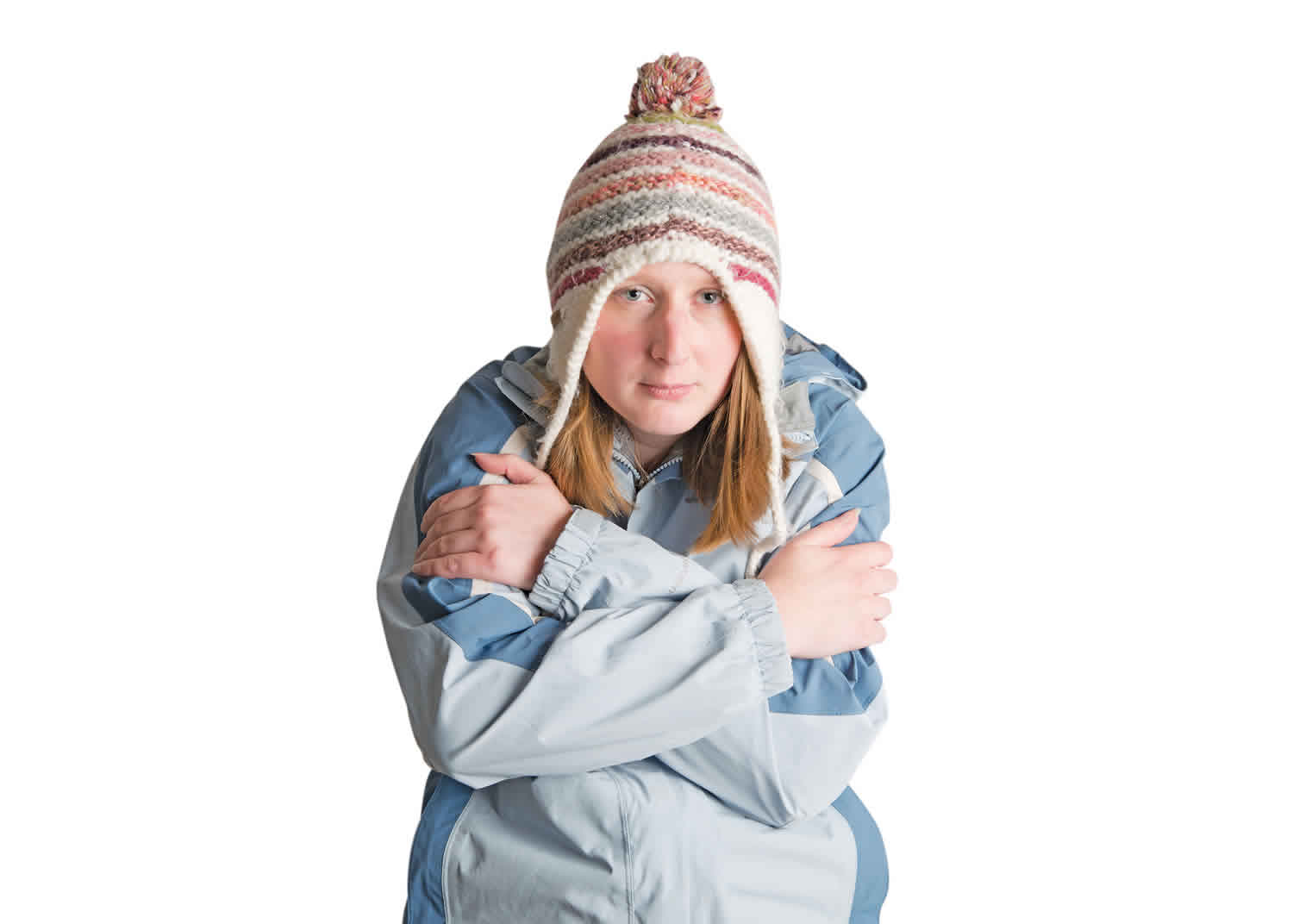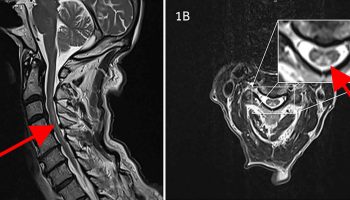What are chills
Chills or shivering refers to feeling cold after being in a cold environment or a subjective reports of shivering or shaking associated with rapid changes in body temperature 1). The word can also refer to an episode of shivering along with paleness and feeling cold. Chills result from involuntary muscle contractions that occur in response to a sudden lowering of body temperature below the prevailing set point.
Chills (shivering) may occur at the start of an infection. They are most often associated with a fever. Chills are caused by rapid muscle contraction and relaxation. They are the body’s way of producing heat when it feels cold. Chills often predict the coming of a fever or an increase in the body’s core temperature.
Chills are an important symptom with certain diseases such as malaria.
Chills are common in young children. Children tend to develop higher fevers than adults. Even minor illness can produce high fevers in young children.
Infants tend not to develop obvious chills. However, call your health care provider about any fever in an infant 6 months or younger. Also call for fevers in infants 6 months to 1 year unless you are sure of the cause.
“Goose bumps” are not the same as chills. Goose bumps occur due to cold air. They can also be caused by strong emotions such as shock or fear. With goose bumps, the hair on the body stick up from the skin to form a layer of insulation. When you have chills, you may or may not have goose bumps.
In health, your average normal body temperature (core or internal temperature) is generally accepted as 98.6 °Fahrenheit (37 °Celsius) 2). Some studies have shown that the “normal” body temperature can have a wide range, from 97 °Fahrenheit (36.1 °Celsius) to 99 °F (37.2 °C). Your body temperature normally changes throughout the day 3) and a circadian temperature rhythm exists in which the highest temperature of each day occurs around 6 p.m.
The variance between the highest and lowest core temperature in a given day is usually no more than 1° to 1.5°C. This circadian rhythm may differ among individuals but should be consistent in each person. Relative to the core (blood) temperature, oral temperature tends to be about 0.4°C lower and axillary temperature up to 1°C lower, while rectal temperature, probably because of fecal bacterial metabolism, averages about 0.5°C higher.
Fever is a physiologic disorder in which the temperature is elevated above one’s normal temperature. An elevated body temperature may accompany any condition in which exogenous or endogenous heat gain exceeds mechanisms of heat dissipation such as occurs with vigorous exercise, exposure to a warm ambient temperature, or the use of drugs that cause excess heat production or limit heat dissipation. In these situations the hypothalamic “thermostat” remains “set” in the normal range. In true fever, mechanisms to regulate the body temperature above the normal set point are actively operating.
In most patients with fever lasting 1 to 2 weeks, the cause will be found or the fever will disappear. Occasionally, despite the history, physical examination, laboratory and radiologic procedures, fever (temperature above 100.9 °F [38.3°C]) will continue beyond 2 to 3 weeks without diagnosis. These patients are said to have fever of undetermined origin (FUO). The critical aspects of any definition of fever of undetermined origin (FUO) are documentation of fever (>100.9 °F [38.3°C] with a supervised electronic thermometer) and allowance of adequate time for the vast majority of self-limited viral illnesses to run their course.
See your doctor if:
- Symptoms such as stiffness of the neck, confusion, irritability, or sluggishness are present.
- Chills are accompanied by a bad cough, shortness of breath, abdominal pain or burning, or frequent urination.
- A child younger than 3 months has a temperature of 101 °F (38.3 °C) or more.
- A child between 3 months and 1 year has a fever that lasts more than 24 hours.
- The fever remains above 103 °F (39.4 °C) after 1 to 2 hours of home treatment.
- The fever does not improve after 3 days, or has lasted more than 5 days.
What to expect at your doctor visit
The provider will take your medical history and perform a physical exam.
You may be asked questions such as:
- Is it only a cold feeling? Are you actually shaking?
- What has been the highest body temperature connected with the chills?
- Did the chills happen only once, or are there many separate episodes?
- How long does each attack last (for how many hours)?
- Did chills occur within 4 to 6 hours after exposure to something that you or your child is allergic to?
- Did chills begin suddenly? Do they occur repeatedly? How often (how many days between episodes of chills)?
- What other symptoms are present?
The physical exam will include the skin, eyes, ears, nose, throat, neck, chest, and abdomen. Body temperature will likely be checked.
Tests that may be ordered include:
- Blood (CBC or blood differential) and urine tests (such as urinalysis)
- Blood culture
- Sputum culture
- Urine culture
- X-ray of the chest
Treatment depends on how long the chills and accompanying symptoms (especially fever) have lasted.
What can cause chills
What causes chills without fever:
- Exposure to a cold environment
- Viral and bacterial infections
Hypothermia
Hypothermia, defined as a drop in core body temperature below 95 °F (35 °C), results in initial/mild impairment in the body’s thermoregulatory capacity. Greater impairment occurs with increasing severity of hypothermia; severe hypothermia is defined as core body temperature dropping below 82.4 °F (28 °C)
Core body temperature below 85 °F (29.4 °C) impairs the ability of the hypothalamus to regulate body temperature is lost. Part of the reason for this diminished regulation is that the rate of chemical heat production in each cell is depressed almost 2-fold for each 10 °F decrease in body temperature.
Extreme symptoms indicative of severe hypothermia include mental status changes, slurred speech, unconsciousness, ventricular arrhythmias, and gross motor skill impairment. End-stage presentation includes central nervous system (CNS) depression (coma), which ultimately suppresses all thermoregulatory function of the body (including the ability to “shiver”).
What cause fever and chills:
- Bacterial infections
- Spirochetal infections
- Rickettsial infections
- Chlamydial infections
- Viruses
- Fungi
- Parasites
- Neoplasms
- Hypersensitivity and autoimmune diseases
- Granulomatous diseases
- Inherited diseases
- Central nervous system causes
- Drugs
- Factitious fever
- Agitated and tremulous states
- Parkinson’s disease
- Acute psychosis/mania
- Drug withdrawal: alcohol, barbiturates, meprobamate
- Drug overdose
- Amphetamines
- Hallucinogens (LSD)
- Phencyclidine (PCP)
- Severe salicylate overdose
- Hyperthyroidism and thyroid medication
- Neurologic disease (autonomic dysfunction, dementia, stroke, parkinsonism)
- Drugs
- Diuretics
- Anticholinergics
- Neuroleptics (phenothiazines, butyrophenones)
- Antidepressants
- Antihistamines
- Antiparkinsonian agents
- Beta blockers, alpha-methyldopa
- Monoamine oxidase inhibitors
- Malnutrition
How to stop chills
Fever (which can accompany chills) is the body’s natural response to a variety of conditions, such as infections. If the fever is mild, 102°F (38.8°C) or less, with no side effects, you do not need to see a provider for treatment. You can treat the problem at home by drinking lots of fluids and getting plenty of rest.
Evaporation cools the skin and reduces body temperature. Sponging with lukewarm water, about 70°F (21.1°C), may help reduce a fever. Cold water may increase the fever as it can trigger chills.
Medicines such as acetaminophen are helpful in fighting a fever and chills.
DO NOT bundle up in blankets if you have a high temperature. DO NOT use fans or air conditioners either. These measures will only make the chills worse and may even cause the fever to rise.
Home therapy for a child
If the child’s temperature is causing the child to be uncomfortable, give pain-relieving tablets or liquid. Non-aspirin pain-relievers such as acetaminophen are recommended. Ibuprofen may also be used. Follow the dosage guidelines on the package label.
Note: DO NOT give aspirin to treat fever in a child younger than 19 years old because of the risk of Reye syndrome.
Other things to help the child feel more comfortable include:
- Dress the child in light clothing, provide liquids, and keep the room cool but not uncomfortable.
- DO NOT use ice water or rubbing alcohol baths to reduce a child’s temperature. These can cause shivering and even shock.
- DO NOT bundle a child with a fever in blankets.
- DO NOT wake a sleeping child to give medicine or take a temperature. Rest is more important.
References [ + ]





